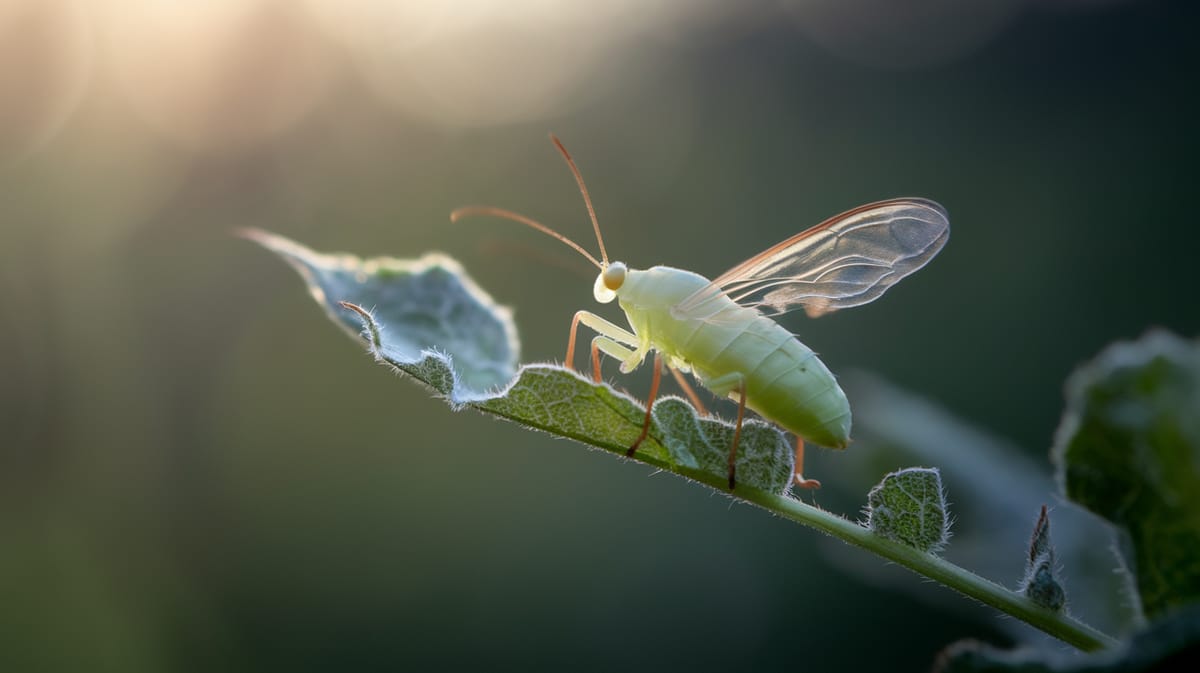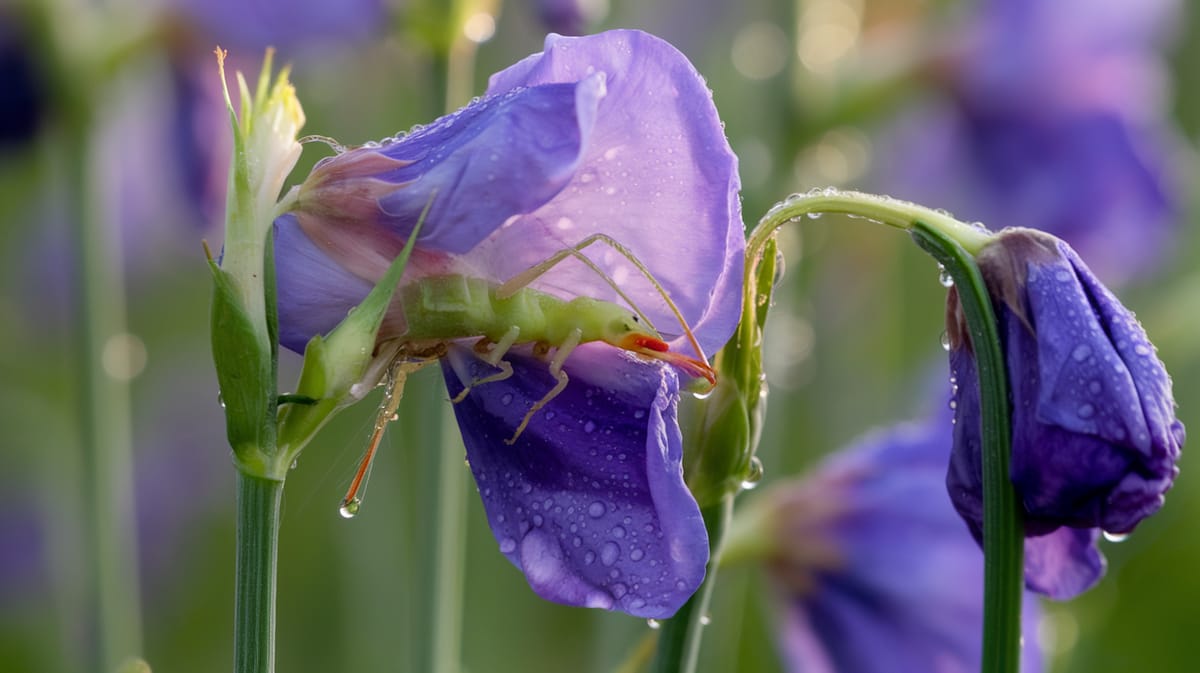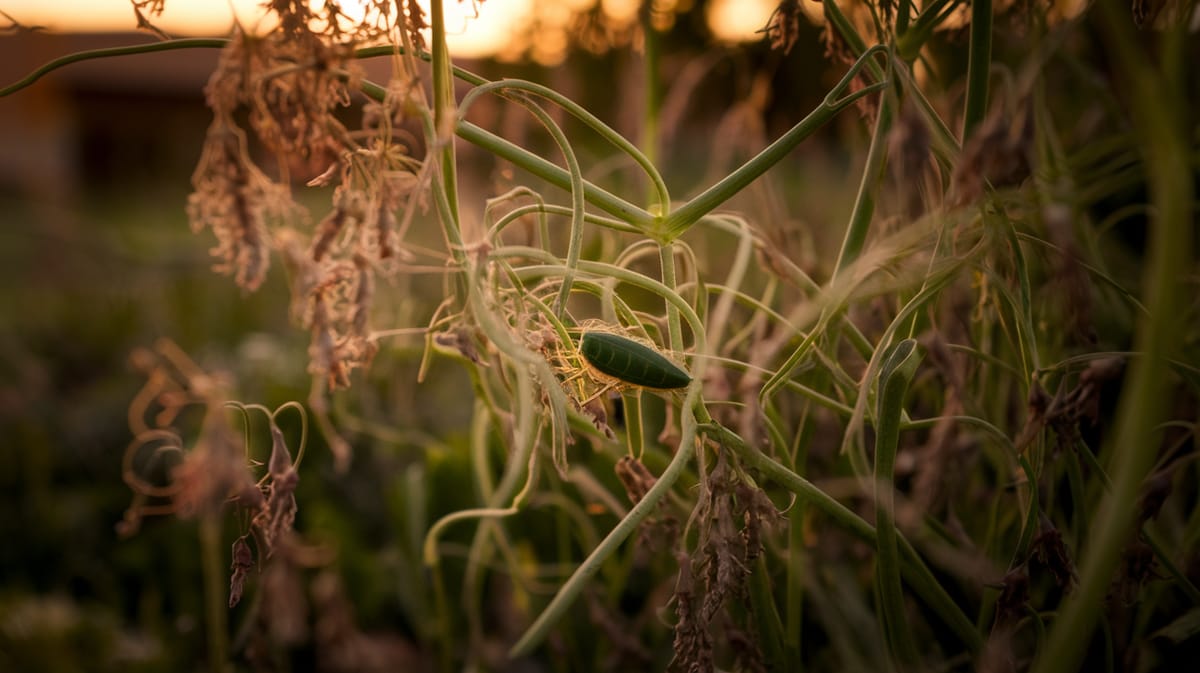Pea Aphid
Tiny yet mighty, the Pea Aphid thrives on legumes, showcasing its unique ability to harness sunlight for energy. Its role in ecosystems highlights its impact on plant health.

Key Insights at a Glance
Did You Know?
Taxonomy & Classification
Pea aphids are unique among insects for their ability to photosynthesize, a trait that reflects an intriguing evolutionary adaptation. Let's understand the evolutionary journey and classification of these remarkable herbivores.
Global Distribution
Pea aphids are present across Europe, Asia, and North America, thriving in temperate regions with a vast range of host plants.
Evolutionary Adaptation
Originating around 50 million years ago, they adapted to various climates by developing a symbiotic relationship with bacteria for nutrient synthesis.
Lifecycle and Growth
A remarkable journey of transformation from Egg to Adult.
Egg
Eggs are laid in the fall, remaining dormant on host plants through winter, ready to hatch with warmer temperatures.
Nymph
Nymphs hatch and undergo four molts, rapidly growing and preparing for adulthood, feeding on plant sap.
Adult
Adults can reproduce both sexually and asexually, forming large colonies, and are capable of winged or wingless forms.
Dietary Habits
A sap-sucking insect with specialized mouthparts, it primarily feeds on plant juices and adapts to various host plants.
| DIET TYPE | DESCRIPTION |
|---|---|
| Primary Diet | Feeds mainly on the sap of legumes like peas, clovers, and beans, using piercing mouthparts to extract nutrients. |
| Secondary Diet | Occasionally taps into the sap of other herbaceous plants, diversifying its diet beyond its primary legume hosts. |
| Occasional | Rarely relies on alternative food sources such as the sap from woody plants during scarce legume availability. |

Behaviour and Adaptations
Discover the intriguing abilities that enable the Pea Aphid to thrive in its environment.
Rapid Reproduction
Quick generation cycles allow for fast population growth and adaptation.
Symbiotic Relationships
Forms beneficial partnerships with ants for protection and sustenance.
Light Sensitivity
Detects UV light to avoid excessive sunlight exposure.
Ecosystem Impact
Supporting ecological balance through the Pea Aphid's contributions to its habitat.
Nitrogen Cycling Facilitator
Pea Aphids aid in nitrogen cycling, enriching soil health and fostering plant growth.
Food Source for Predators
Provides essential nutrition for predators like ladybugs and birds.
Plant Health Indicator
Reflects crop health, signaling potential plant stress or health issues.
Conservation Challenges
Understanding and addressing the major threats to Pea Aphid populations.
Chemical Exposure
Pesticides disrupt pea aphid life cycles, reducing their populations significantly.
Habitat Loss
Agricultural expansion leads to loss of natural habitats for pea aphids.
Climate Change
Temperature fluctuations alter pea aphid breeding patterns and survival rates.
Frequently Asked Questions
How long do Pea Aphid live?
Pea Aphids typically live for about 30 days. Their lifespan can vary based on environmental conditions, such as temperature and availability of food. During their short life, they can reproduce rapidly, especially in favorable conditions, leading to large population increases.
What do Pea Aphid eat?
Pea Aphids primarily feed on the sap of leguminous plants, such as peas, alfalfa, and clover. They use their specialized mouthparts to pierce plant tissues and extract nutrients, which can weaken the host plants and reduce crop yields.
Are Pea Aphid poisonous?
Pea Aphids are not poisonous to humans or animals. They pose no direct threat to humans but can harm plants by spreading plant diseases and causing damage through their feeding habits, which can lead to significant agricultural losses.
Are Pea Aphid endangered?
Pea Aphids are not considered endangered. They are common and widespread, particularly in agricultural areas where they find an abundance of host plants. Their populations can rapidly increase under favorable conditions, making them a frequent pest in many regions.
What do Pea Aphid symbolize?
Pea Aphids do not have a widely recognized symbolic meaning. In an agricultural context, they often represent pest issues and challenges in crop management due to their capacity to cause significant damage to leguminous crops.
Do Pea Aphid bite?
Pea Aphids do not bite humans or animals. They are equipped with mouthparts designed to pierce plant tissues and extract sap, not to bite or feed on other organisms. Their feeding is limited to plants, particularly leguminous species.
What color are Pea Aphid?
Pea Aphids are typically green, which helps them blend in with the leaves of the plants they inhabit. Some may exhibit a pinkish or reddish hue, depending on environmental factors and genetic variations within the population.
Does a Pea Aphid have wings?
Pea Aphids can have wings, but not all individuals are winged. Winged forms usually develop in response to overcrowding or poor environmental conditions, allowing them to disperse to new plant hosts. Wingless forms are more common when conditions are stable and favorable.
What does a Pea Aphid look like?
Pea Aphids are small, pear-shaped insects, usually about 2-4 mm in length. They have long antennae and may be green, pink, or reddish. Winged individuals have transparent wings, while others are wingless. They often cluster on plant stems and leaves.
Is a Pea Aphid an insect?
Yes, a Pea Aphid is an insect. It belongs to the order Hemiptera, which includes other true bugs. As an insect, it has three main body parts: head, thorax, and abdomen, as well as six legs and, in some cases, wings.
Related Insects
Discover insects with similar characteristics to Pea Aphid - including shared habitats, diets, and taxonomic classifications
Share this profile
Help others discover Pea Aphid
